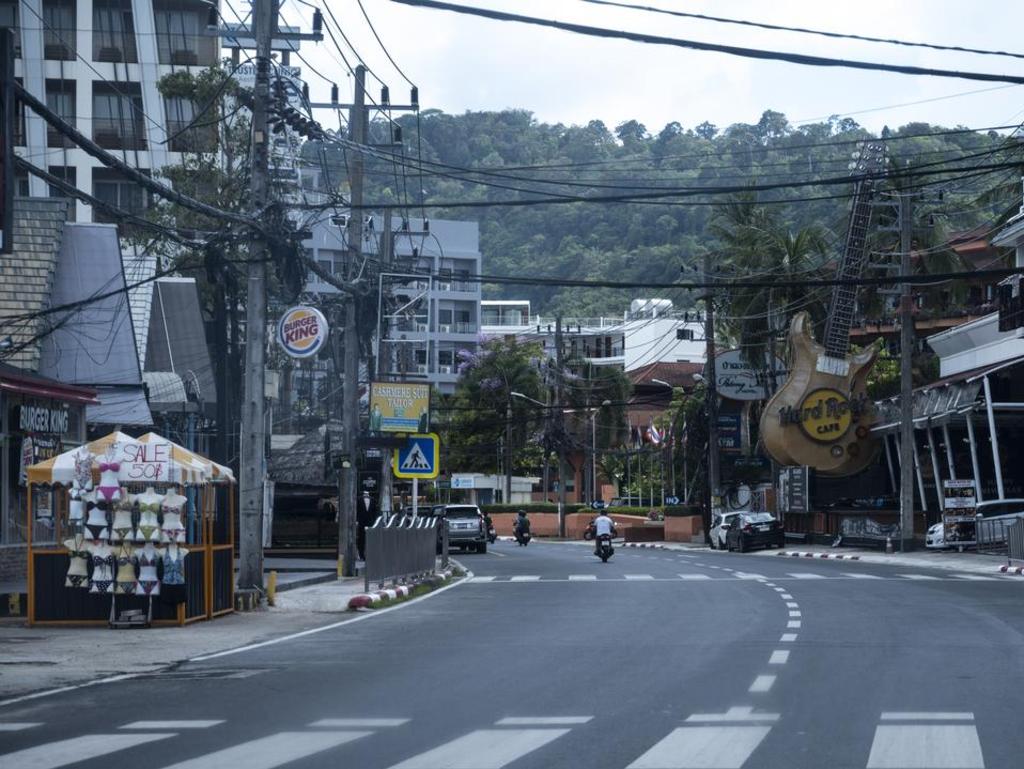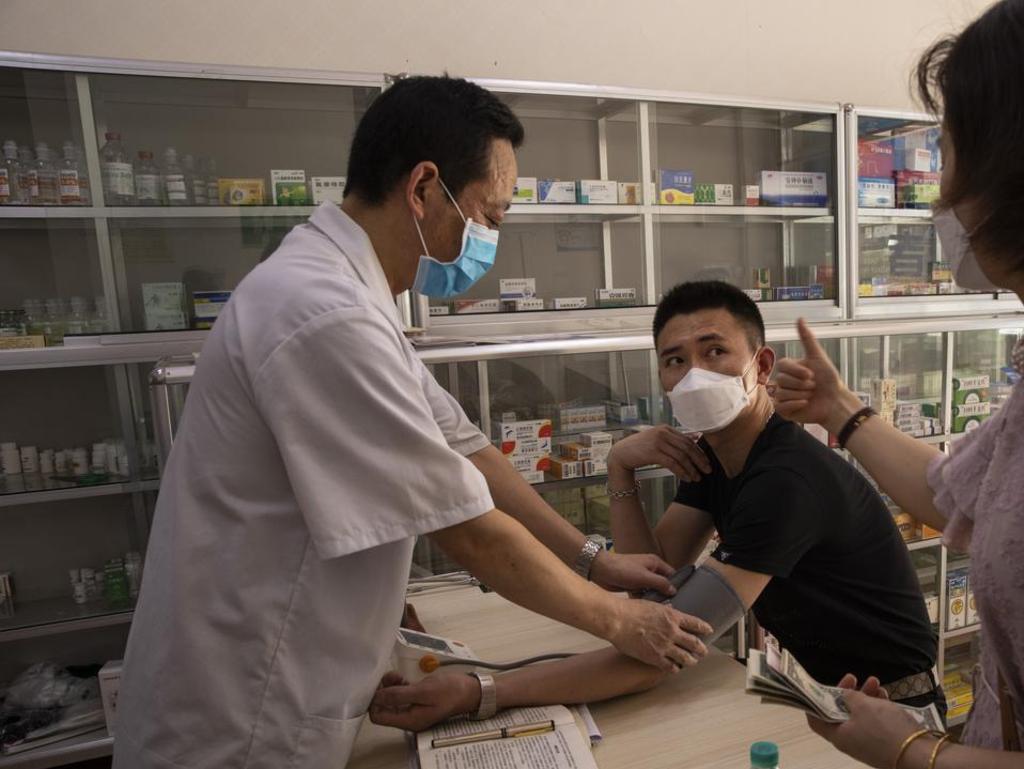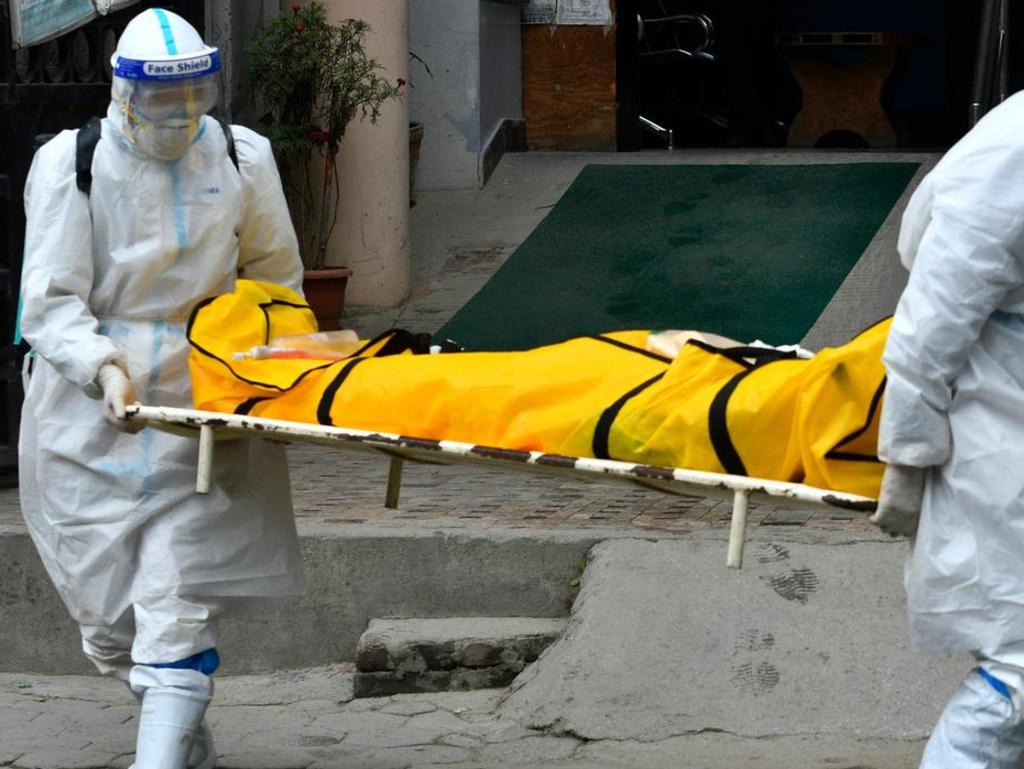Concern as India’s virus crisis spreads across South East Asia
The WHO has put governments on alert after two cases of India’s devastating mutant strain were detected just north of Australia’s shores.
World
Don't miss out on the headlines from World. Followed categories will be added to My News.
The World Health Organisation has confirmed India’s cataclysmic second wave has begun spreading its havoc across borders, warning governments to take action as a massive surge in cases grips South East Asia and beyond.
India recorded close to half of the globe’s coronavirus infection tally last week, with 414,433 new infections and 3920 deaths in the past 24 hours alone.
On Thursday, the WHO confirmed more than 2.7 million new cases and 25,000 new deaths in the South East Asia region, marking a concerning 19 per cent and a 48 per cent increase respectively compared to the previous week.
“India is currently driving the vast majority of this upward trend,” the organisation warned.
Red Cross Asia-Pacific director Alexander Matheou sounded the alarm for the region, which is in danger of having the virus spiral out of control at a rate not seen since the initial outbreak in China in 2019.
“We need to act now and we need to act fast to have any hope of containing this human catastrophe,” Mr Matheou said in a statement.
“This virus has no respect for borders and these variants are running rampant across Asia.”

Indonesia
The highly infectious coronavirus variant currently gripping India has been detected a stone’s throw away from Aussie borders in Indonesia. The country confirmed two patients returned tests containing India’s double mutant B. 1.617 strain earlier this week.
Government officials have introduced a ban on all domestic travel from May 6 to May 17 in a bid to stem the spread through the country’s Mudik holiday period.
Ordinarily, tens of millions of people travel across the nation to visit family to celebrate the end of Ramadan, but experts warn a large spike in holiday travel could spell disaster if not kept in check.
“Last year, the Eid holidays contributed to a 10 to 20 per cent rise in coronavirus cases. It is an undisputed scientific fact that (when) a large number of people (are together) this will worsen a pandemic,” Griffith University epidemiologist Dicky Budiman said.
“New variants have also been detected in Indonesia. These are more contagious and could reduce the efficacy of the vaccines or peoples’ antibodies. It means that people who have already contracted COVID-19 could get reinfected. This is why Mudik is still risky this year.”
Indonesia saw 6327 new cases yesterday, 700 more from the previous day, continuing a growing surge in cases beginning in April.
According to official counts, Indonesia has recorded 1,703,632 total cases and 46,663 deaths since the beginning of the pandemic.

Thailand
Stamping out a second wave in December, Thailand could be forgiven for believing the worst was behind it after staying relatively on top of the pandemic throughout 2020.
The nation home to 60 million adults was the first country outside China to record a case of coronavirus and has since only recorded 382 deaths.
However, the popular holiday destination, devastated economically by the lack of tourism, now finds itself sitting on the brink of a third wave. On Saturday 2419 new cases and 19 new deaths were recorded, making it the eighth straight day of 500-plus positive cases.
Prime Minister Prayuth Chan-ocha has come under fire for the government’s handling of the vaccine rollout, which has inoculated just 2 per cent of the population. Upon news of the recent surge, he announced the government was pushing to acquire “150-200 million doses of vaccine for future phases (of the rollout)”.
Currently, Thailand has 496 patients in critical condition with the nation’s ICU capacity under strain.
Since the beginning of the pandemic, Thailand has recorded 81,274 cases and 382 deaths.

Sri Lanka
Perched just south of India near the Bay of Bengal, the island nation of Sri Lanka is experiencing a massive surge in new cases.
The country home to 21 million people reported 1111 new cases on April 27, marking the first time daily infections had passed 1000 since the initial outbreak in early 2020.
After a relatively smooth start to the year in terms of infection rates, the Sri Lankan government was forced to reintroduce lockdowns across the nation, including shutting schools and banning private events.
On Friday, infections almost doubled, recording 1914 new cases and a record 19 new deaths, according to the National Operations Centre for Prevention of COVID-19.
Dr Olivia Nieveras from the WHO’s Sri Lanka arm warned the worst may yet be to come for the nation and urged its citizens to take the latest spike seriously.
“(Sri Lanka’s) health workers, security forces and other local authorities cannot do this alone,” she said.
The government has since banned all flights from neighbouring India.
Sri Lanka has recorded 121,338 cases and 764 deaths since the beginning of the pandemic.

Cambodia
After remaining relatively quiet on the COVID-19 front, Cambodia has reported a worrying surge in coronavirus figures in recent weeks. The South East Asian nation, home to a population of just under 17 million, hadn’t recorded a single death to the pandemic until February 2021.
Now, it is battling the beginning of a worrying surge after recording 650 new cases and four deaths.
WHO representative to Cambodia Li Ailan said the developing nation’s healthcare system will not be able to cope with an all-encompassing wave as seen in India.
“Despite our best efforts, we are struggling to control the virus,” Li Ailan told CNN. ”Unless we can stop the outbreak, Cambodia’s health system is at high risk of being overwhelmed, which would have disastrous consequences.”
Vaccination rollouts have been slow in Cambodia, with just over 6 per cent of the population being fully vaccinated.
Cambodia has recorded 18,717 cases and 114 deaths since the initial outbreak.

Nepal
Nestled on the border between China and India, Nepal is dealing with a concerning coronavirus surge, reporting a 1200 per cent rise in COVID-19 infections since April.
Just a month ago daily cases were hovering around 300. The Himalayan republic is now confirming more than 9000 new cases per day, leagues beyond its previous peak of 6000 daily cases during a second spike in November.
There are fears the rate of infection may be outpacing that in India. Last weekend in Nepal, 44 per cent of all tests came back positive.
The virus is so rife, cases have been reported at the remote Everest base camp.
And just like in India, Nepal’s hospitals are bursting at the seams with sick patients while supplies of oxygen run low.
“What is happening in India right now is a horrifying preview of Nepal’s future if we cannot contain this latest COVID surge that is claiming more lives by the minute,” Nepal Red Cross chairman Dr Netra Prasad Timsina told CNN.
Since the initial outbreak, Nepal has recorded 377,603 cases and 3579 deaths.
Originally published as Concern as India’s virus crisis spreads across South East Asia







